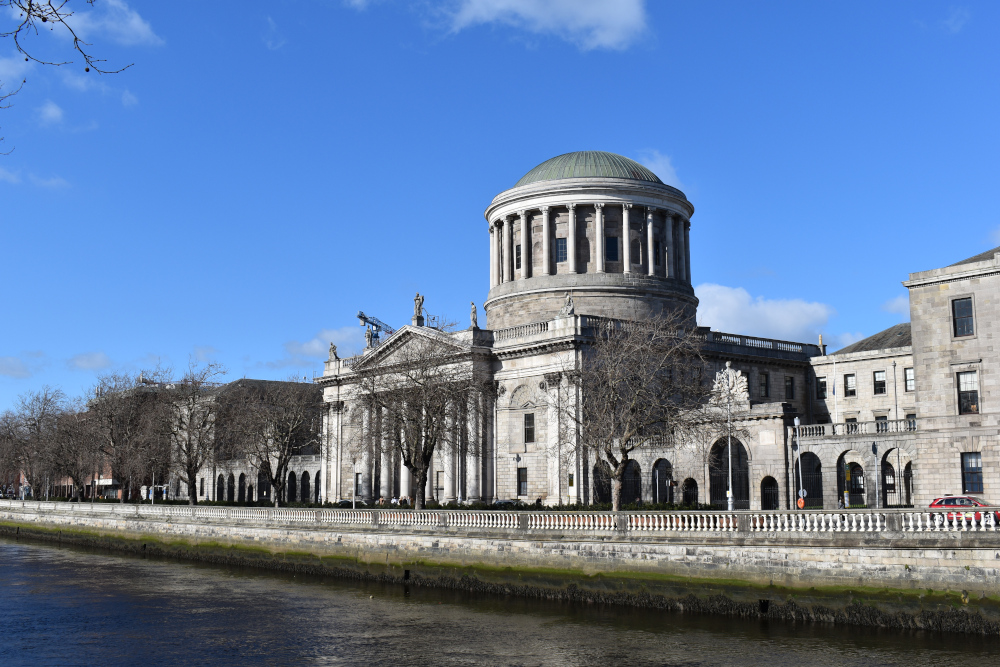Supreme Court: Participant in joint enterprise did not successfully ‘abandon’ plan

The Supreme Court has determined that a participant in a joint enterprise which resulted in a serious assault and robbery failed to take steps to withdraw which were sufficiently proportionate to his role in planning the crime.

About this case:
- Citation:[2024] IESC 31
- Judgment:
- Court:Supreme Court
- Judge:Ms Justice Iseult O'Malley
Delivering judgment for the Supreme Court, Ms Justice Iseult O’Malley stated that “the actions taken by the accused must be objectively proportionate to the effects of the earlier actions of the accused. The more they have done to further the criminal enterprise, the more they must try to prevent it from coming to pass.”
Background
The appellant, a financial adviser, was convicted in the Special Criminal Court of robbery, assault causing harm and making a demand with menaces, on the basis that he did not physically take part in the offences but had been part of a joint enterprise.
The offences took place in a rural area of Co Louth on 2 December 2017, where a dealer in second-hand construction equipment was lured to the location under the impression that he was to inspect machinery that he was interested in buying. He was attacked by three masked men who demanded money from him, and was imprisoned in the boot of a car whilst three phones and a laptop were robbed.
The DPP alleged that the appellant had devised and began the implementation of the scheme, recruited the men in charge of the group which carried out the crimes, and received part of the benefit of the crimes in the form of data from the victim’s phones. The victim was well-known to the appellant both personally and through business dealings, and it appeared that the men shared animosity between them.
The appellant accepted that he had devised the original plan, but became concerned with the erratic behaviour of a debt-collector, Mr Finglas, who was part of the enterprise. The appellant stated that he had asked Mr Finglas to cease the plan in November 2017, causing him to allegedly assault the appellant.
The appellant contended that he had withdrawn from or ‘abandoned’ the enterprise at an early stage, and had not intended or envisaged the events which occurred.
The Special Criminal Court
The Special Criminal Court determined inter alia that the prosecution had rebutted the appellant’s defence of withdrawal from the joint enterprise, the appellant having failed to take the “first and most obvious step” to effect a full withdrawal from the enterprise which would have been to warn the victim directly.
The court also considered that having contacted gardaí and the PSNI, the appellant failed to admit that he had a role in the enterprise and failed to identify the source of the possible danger to them.
The appellant appealed the court’s verdict.
The Court of Appeal
The Court of Appeal rejected the suggestion that the trial judge erred by focusing on whether the appellant should have admitted his own criminal acts, rather than whether the elements of abandonment were present.
The court considered that the trial court’s entire focus was on the sufficiency of the acts of the appellant which were said to prove withdrawal from the enterprise, and had clearly found an insufficiency thereof.
Noting that the issue was whether the legal effectiveness of the steps taken by the appellant to withdraw from the common design, the court found that the Special Criminal Court had approached the matter correctly by reference to the principles of an effective ‘abandonment’: A clear and unequivocal withdrawal, in a timely fashion, communicated either to the other parties or to the police.
The Supreme Court
The Supreme Court observed that the central issue before it concerned the applicable criteria to the defence of abandonment and whether the appellant took sufficient steps to be entitled to avail of it.
Having considered international jurisprudence, Ms Justice O’Malley highlighted that the distinction between two separate scenarios — one where the act of withdrawal relied upon constituted a denial of actus reus or mens rea, and one where it served as a “true” defence — was of crucial importance.
The judge emphasised that the defence is relevant only in cases of joint enterprise where the accused invoking it is not a principal offender but is liable to be convicted on the basis of secondary liability, as the principal offender can never claim to have withdrawn before the crime was committed.
The court explained that in cases of joint enterprise by agreement, it is possible for a person who is not even present when the crime is carried out to be convicted in the same way as the principal offender, where they do something with the required intent amounting to aiding, abetting, counselling or procuring the commission of the offence.
Ms Justice O’Malley stated that “the accused person becomes potentially liable once they have intentionally taken the relevant actions. That liability crystallises when the offence is carried out. It is not a defence for the accused to say afterwards that they had changed their minds before the substantive crime was committed and in fact hoped that it would not be committed.”
The judge opined that “it is only at the point where guilt has been established that the public policy interest may provide a defence of withdrawal, excusing the accused from conviction and punishment for the substantive offence, to an accused who meets the relevant criteria. I would, therefore, see it as a ‘true’ defence, but one of a special excusatory character.”
The Supreme Court suggested that it may be open to an accused to argue “both that their actions demonstrated that they were not full participants in the crime, and therefore not guilty, and alternatively that the actions showed that they had withdrawn effectively from any agreement to which they may have been a party before it was carried out.
Noting that common law jurisdictions unanimously require evidence of a clear, unequivocal and timely communication to the principal offender by words or conduct, Ms Justice O’Malley considered that whether there is a further requirement that the accused should have taken other steps, and what those steps should be, is at least partly a question of policy.
The judge highlighted the public interest in incentivising those planning a joint enterprise to change their minds and to do something to reduce the likelihood of the crime being committed, finding that the question was whether the additional steps taken by the accused “could have had that effect in the circumstances of the case”.
The court decided that “the actions taken by the accused must be objectively proportionate to the effects of the earlier actions of the accused. The more they have done to further the criminal enterprise, the more they must try to prevent it from coming to pass.”
Ms Justice O’Malley adopted Ahsin v R [2014] NZSC 153 in respect of the questions to be addressed:
“Is it reasonably possible that:
- “the defendant demonstrated clearly, by words or actions, to the principal offender that he or she was withdrawing from the offending before the offence was committed?
- “the defendant took steps to undo the effect of his or her previous involvement or to prevent the crime?
- “the steps taken by the defendant for those purposes amounted to everything that was reasonable and proportionate, having regard to the nature and extent of the defendant’s previous involvement?
- “the steps taken by the defendant were timely, in the sense that the defendant acted at a time when it was reasonably possible that he or she may be able either to undo the effect of his or her prior involvement or to prevent the crime?”
The judge determined that the steps that the appellant was required to take had to be commensurate with his central role in the enterprise, and in the circumstances, his efforts were inadequate for the purpose of undoing the effect of his actions or to prevent the crime.
Conclusion
Accordingly, the Supreme Court dismissed the appeal.
Director of Public Prosecutions v William Twomey [2024] IESC 31











